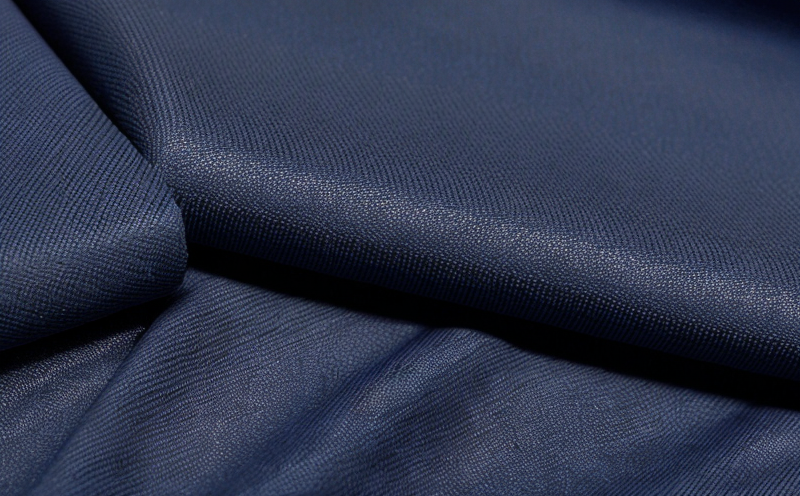Water absorption rate of technical textiles for industrial applications
Unlocking the Secrets of Water Absorption Rate Why It Matters for Industrial Applications
As industries continue to evolve and innovate, the demand for high-performance materials has never been greater. In this era of technological advancements, technical textiles have emerged as a crucial component in various industrial applications. Among these critical parameters is the water absorption rate (WAR) of technical textiles, which plays a pivotal role in determining their effectiveness and efficiency.
At Eurolab, we understand the significance of accurate testing and certification for industrial materials. Our laboratory services offer comprehensive evaluation of water absorption rates for technical textiles, providing businesses with valuable insights into their products performance. In this article, well delve into the world of WAR, exploring its importance, benefits, and applications.
What is Water Absorption Rate (WAR) of Technical Textiles?
Water absorption rate refers to the measure of how much water a material can absorb within a specific timeframe. It is an essential parameter for technical textiles used in industrial applications, where moisture resistance, durability, and weight reduction are critical factors. WAR helps manufacturers optimize their products design, ensuring they meet the required standards and expectations.
Why is Water Absorption Rate Important for Industrial Applications?
In various industries, water absorption rate plays a vital role in determining the performance and lifespan of technical textiles. Here are some key reasons why WAR matters
Moisture Resistance Technical textiles with high WAR values can lead to reduced strength, durability, and even material failure. In applications where moisture is present, such as in textiles used for filtration or soundproofing, a low water absorption rate is crucial.
Weight Reduction By minimizing water absorption, manufacturers can create lightweight materials that maintain their structural integrity while reducing weight. This is particularly important in aerospace, automotive, and construction industries.
Cost Savings Reducing water absorption rates can lead to cost savings by minimizing material replacement and maintenance needs.
Improved Performance Technical textiles with optimal WAR values exhibit enhanced properties such as increased tensile strength, reduced shrinkage, and improved dimensional stability.
Enhanced Safety Materials with low water absorption rates offer better protection against moisture-related hazards, ensuring the safety of users in various industries.
Key Benefits of Water Absorption Rate of Technical Textiles for Industrial Applications
Here are some key benefits of using WAR testing services
Accurate Material Selection WAR helps manufacturers select materials that meet specific requirements, reducing the risk of material failure and ensuring optimal performance.
Process Optimization By understanding the water absorption rate of technical textiles, businesses can optimize their production processes, improving efficiency and productivity.
Compliance with Regulations Accurate WAR testing ensures compliance with industry standards and regulations, reducing the risk of product recalls and reputational damage.
Informed Material Design WAR provides valuable insights into material behavior under different conditions, enabling manufacturers to design products that meet specific performance criteria.
QA Frequently Asked Questions about Water Absorption Rate of Technical Textiles
Here are some common questions related to water absorption rate
Q1 What is the significance of water absorption rate in technical textiles?
A WAR determines a materials ability to absorb water, which affects its strength, durability, and weight.
Q2 Why is it essential to test water absorption rates for industrial applications?
A Accurate testing ensures compliance with industry standards, optimizes production processes, and reduces the risk of material failure.
Q3 What are the key factors influencing water absorption rate in technical textiles?
A Material composition, fiber type, weave density, and finishing treatments can impact WAR values.
Q4 How do you determine the optimal water absorption rate for industrial applications?
A We consider specific industry requirements, material properties, and performance criteria to determine optimal WAR values.
Conclusion
In conclusion, the water absorption rate of technical textiles is a critical parameter that affects the performance, durability, and efficiency of various industrial materials. At Eurolab, our laboratory services provide comprehensive evaluation of WAR for technical textiles, ensuring businesses have access to accurate data and informed decision-making.
By understanding the importance and benefits of WAR testing, manufacturers can optimize their products design, reduce material failure risks, and improve overall performance. Trust Eurolabs expertise in water absorption rate testing to unlock the secrets of your technical textiles and propel your business towards success.
Services Offered by Eurolab
Eurolab offers a wide range of laboratory services, including
Water Absorption Rate (WAR) Testing
Mechanical Testing (Tensile Strength, Tear Resistance, etc.)
Chemical Testing (Fiber Identification, pH Testing, etc.)
Dimensional Stability and Shrinkage Analysis
Material Characterization and Properties Evaluation
Stay Ahead with Eurolab
Dont compromise on product performance or safety. Choose Eurolab for accurate and reliable water absorption rate testing services, ensuring your industrial materials meet the highest standards of quality and efficiency.
By partnering with Eurolab, youll unlock the full potential of your technical textiles and drive business growth through informed decision-making. Contact us today to learn more about our laboratory services and how they can benefit your organization.




